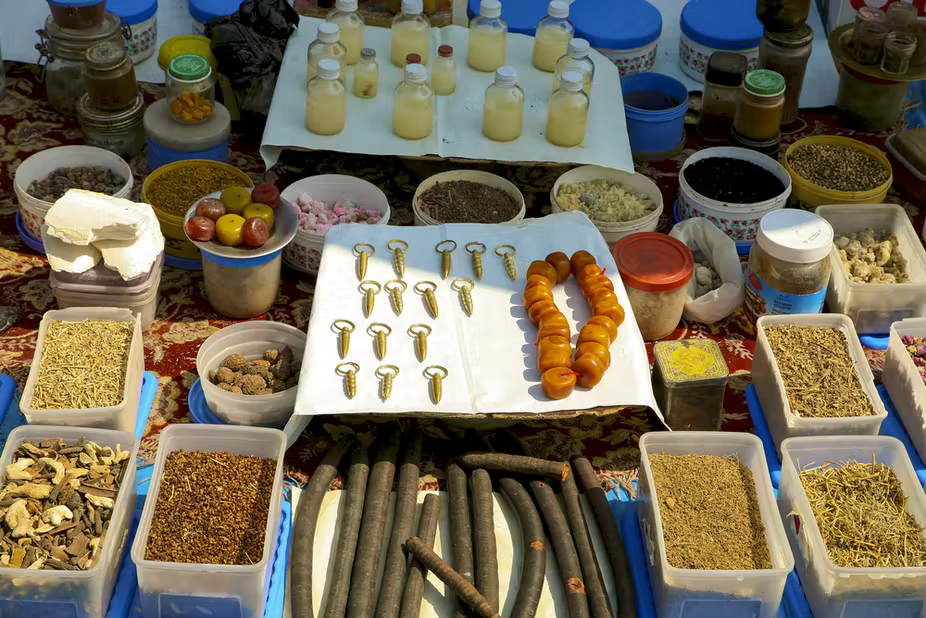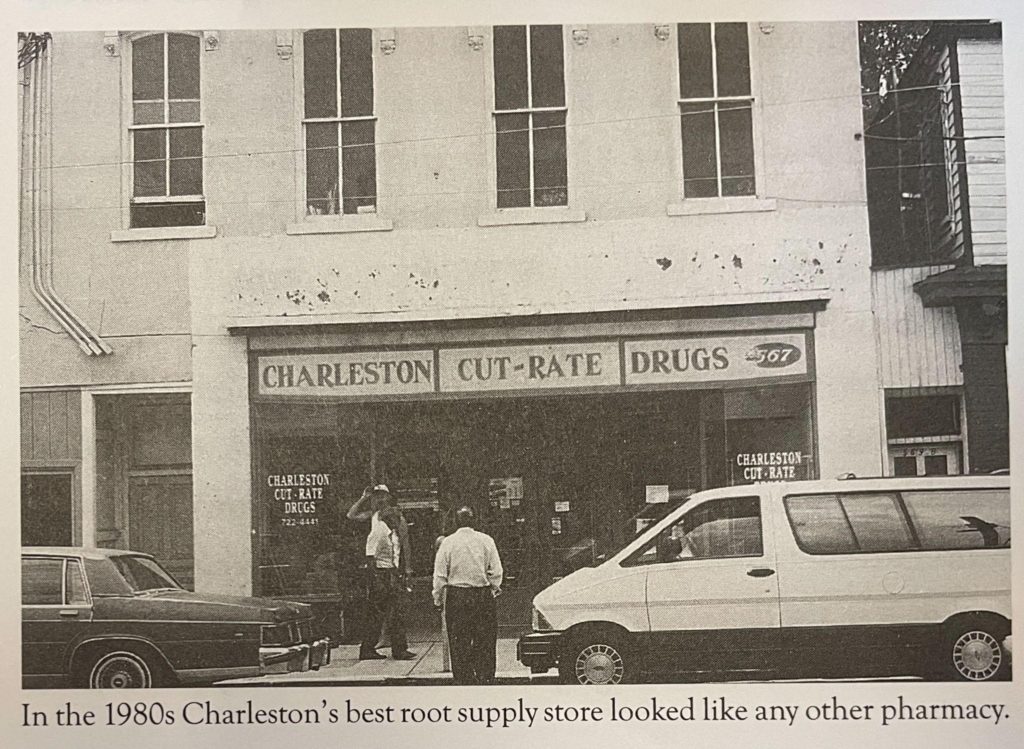» Archive Spotligt: The Legacy of Root Medicine in South Carolina by Mateo Mérida
Without the influences of African American people, medicine as a concept and practice would look very different today. Modern practices such as inoculation, gynecology, and certain birthing techniques can be traced directly back to the knowledge of African descended people held in bondage in the United States.
While some of that knowledge has become part of mainstream medicine, many other African concepts of medicine and healing have been stigmatized, and consequently misunderstood. The most prominent practice rooted in the African tradition in South Carolina is called Root Medicine and has existed for generations.

Although it is not a fully-fledged religion like Santería, Vodou, or Candomble, Root Medicine is the direct result of the intermingling of cultures the African Diaspora due to slavery and is a practice that appears within each of the religions. As people from West and Central Africa were forcibly brought to the Americas and the Caribbean, they were exposed to Christianity. Throughout this process of forced cultural assimilation, enslaved Africans combined their ideas of spirit and medicine, blended it with new Euro-Christian beliefs and ideas, with some aspects of Indigenous American practices as well. In Blue Roots: African-American Folk Magic of the Gullah People, Roger Pinckney elaborates “The Gullah are also almost universally devout Christians and that Christianity serves as a vehicle for, rather than an impediment to, rootwork.” While rootwork is treated as synonymous with Root Medicine, it does not emphasize the medical purposes of the practice. By result, when describing the tie of Christianity and “root work,” Pinckney is describing all phenomena connected to utilizing roots for their spiritual properties, medical and supernatural.
Another element of root work that is not strictly medicinal is hexing. Hexing is the placing spell on a person, often with malicious intent. This connection between Root Medicine and hexes stems from their shared connection with Vodou, Santería and other African diasporic religions. For many, Root Medicine automatically equates curses and hexes, though that is not generally the case.
Even for some African descended people like Ruby Cornwell who was born and raised in South Carolina, the conflation between hexes and Root Medicine is not unusual. She recalled as a young girl, that a woman approached her father, who was a Christian minister, seeking his help, as she believed that she had been hexed. Elaborating her father’s approach to the situation, Cornwell says “Now they don’t say that it doesn’t exist, you see because they know so well, they feel it so deeply, that it does exist… Nothing to laugh at, you know, though you might as children, you might want to ridicule and all, but he dealt with it very seriously.” Although Cornwell herself did not believe in hexes necessarily, she learned from her father the importance of treating it as a matter of fact anyway. Still, treating something as real—even without believing that something is real—makes it real in its effects. By result, Cornwell’s misconceptions of Root Medicine and observed fear of hexing has held a real and tangible space in her own life, despite her personal belief.
While many who do not practice Root Medicine associate it with hexing or curses, it is above all a practice of healing. One of the most common practices associated with Root Medicine is the use of the herb Life Everlasting. It grows in the wild throughout the Carolinas, and it can be smoked or brewed as a tea, making it a valuable remedy for the common cold.
Garlic has also been a staple of South Carolina Root Medicine. Beyond its culinary use, it has been utilized for treating open sores, as well as high blood pressure.
Root medicine has been long sidelined by the academic medical field. Due to the deep interconnection of the healing of the body and spirit in Root Medicine, it has been largely viewed as backwards or primitive by a Southern White aristocracy, even well before the Civil War, which remains true even to this day.

- Morton, Julia F. Folk Remedies of the Low Country. E. A. Seemann Publishing, Inc.: Miami, FL. 1975. pp 65.

- Pinckney, Roger. Blue Roots: African-American Folk Magic of the Gullah People. Sandlapper Publishing Inc.: Orangeburg, SC. pp. 82.
Despite the racialized and elitist outlooks that have been placed upon Root Medicine, it is still very much a part of life in the Lowcountry. In a 2016 article by David Lauderdale, he describes that while the legacy of Lowcountry Voodoo has apparently declined in places like Beaufort, fear of curses or hexes still holds cultural sway in the area. By consequence, so does Root Medicine.
South Carolina is just one place where the practice of Root Medicine thrives. More broadly, an important element of Black Lives Matter has been healing, both socially and individually. As a direct result, Christian, African, and traditional forms of spirituality—including Root Medicine—have been an integral element in promoting this collective healing. By consequence, Black Lives Matter advocates have sought to celebrate the diversity of traditions that have shaped the African experience in America, and can help promote a healing of the spirit.
Drawn from African spiritual beliefs just as much as from Christian beliefs, Root Medicine is one of the most notable and underappreciated ways medicine has been practiced beyond the hospital.
Sources
- Schwartz, Marie Jenkins. Birthing a Slave: Motherhood and Medicine in the Antebellum South. Harvard University Press: Cambridge, MA. 2006.
- Pinckney, Roger. Blue Roots: African-American Folk Magic of the Gullah People. Sandlapper Publishing Inc.: Orangeburg, SC. pp. 111.
- Cornwell, Ruby. “Oral history interview with Ruby Cornwell.” Avery Research Center: Avery Research Center Oral Histories. College of Charleston, Charleston, SC. 1981. Accessed January 26, 2022. Pp 13-14. https://lcdl.library.cofc.edu/lcdl/catalog/lcdl:23389.
- Morton, Julia F. Folk Remedies of the Low Country. E. A. Seemann Publishing, Inc.: Miami, FL. 1975. pp 64-65.
- This website was part of a research project headed by Kenyon College undergraduate students and professors Will Scott and Peter Rutkoff, with collaboration with the Avery Research Center, Penn Center, and others. “Garlic” North by South. Kenyon College, Gambier, OH. 1998. Accessed Jan. 26, 2022.
- Fett, Sharla M. Working Cures: Healing, Health, and Power on Southern Slave Plantations. Chapel Hill University Press: Chapel Hill, NC. 2002.
- Lauderdale, David. “Voodoo’s heyday has passed, but the Gullah tradition still bewitches in SC.” The State Jan. 27, 2016. Accessed Jan. 26, 2022. https://www.thestate.com/living/article56831243.html
- Farrag, Hebah H., and Ann Gleig. “Far from being anti-religious, faith and spirituality run deep in Black Lives Matter.” USC Donsife Magazine. September 14, 2020. Accessed January 26, 2022. https://dornsife.usc.edu/news/stories/3310/spirituality-runs-deep-in-black-lives-matter-movement/
Image Credits
- Gouws, Chrisna. “Traditional African medicine and conventional drugs: friends or enemies?” The Conversation. Mar. 5, 2018. Accessed Jan. 27, 2022. https://theconversation.com/traditional-african-medicine-and-conventional-drugs-friends-or-enemies-92695
- Morton, Julia F. Folk Remedies of the Low Country. E. A. Seemann Publishing, Inc.: Miami, FL. 1975. pp 65.
- Pinckney, Roger. Blue Roots: African-American Folk Magic of the Gullah People. Sandlapper Publishing Inc.: Orangeburg, SC. pp. 82.
